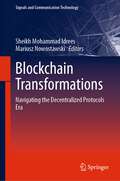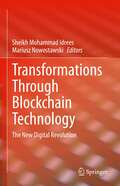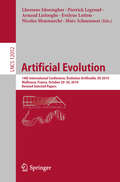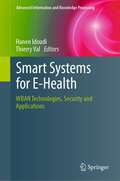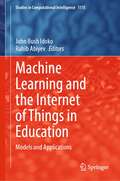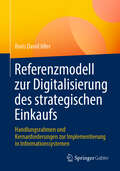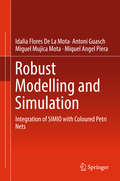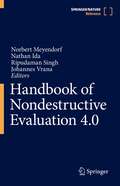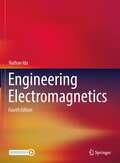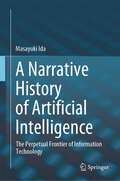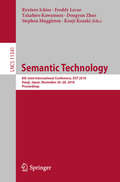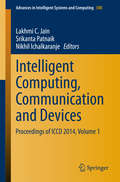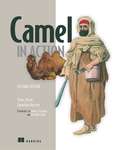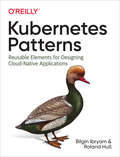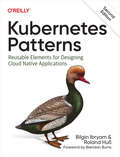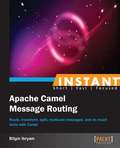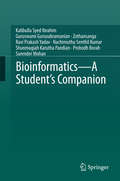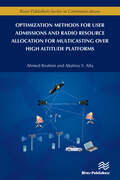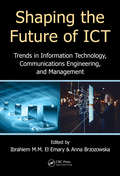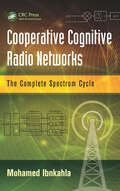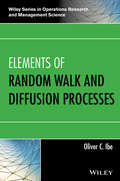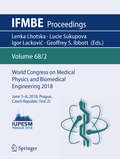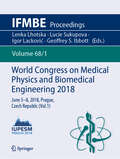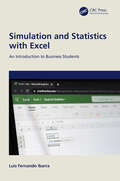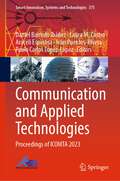- Table View
- List View
Blockchain Transformations: Navigating the Decentralized Protocols Era (Signals and Communication Technology)
by Sheikh Mohammad Idrees Mariusz NowostawskiThis book provides a guide for those looking to understand the potential of blockchain technology and its impact on various industries. The book provides an in-depth exploration of blockchain technology, its use cases, and the opportunities and challenges it presents. From digital currencies and smart contracts to supply chain management and decentralized finance, the book covers all the key aspects of blockchain technology. The authors also go beyond the technical details, providing valuable insights and practical advice on how to navigate this new era of decentralization and trustless transactions. The book is an ideal read for researchers, entrepreneurs, investors, or anyone looking to stay ahead of the curve and stay informed about the future of blockchain technology.
Transformations Through Blockchain Technology: The New Digital Revolution
by Sheikh Mohammad Idrees Mariusz NowostawskiThe book serves as a connecting medium between various domains and Blockchain technology, discussing and embracing how Blockchain technology is transforming all the major sectors of the society. The book facilitates sharing of information, case studies, theoretical and practical knowledge required for Blockchain transformations in various sectors. The book covers different areas that provide the foundational knowledge and comprehensive information about the transformations by Blockchain technology in the fields of business, healthcare, finance, education, supply-chain, sustainability and governance. The book pertains to students, academics, researchers, professionals, and policy makers working in the area of Blockchain technology and related fields.
Artificial Evolution: 14th International Conference, Évolution Artificielle, EA 2019, Mulhouse, France, October 29–30, 2019, Revised Selected Papers (Lecture Notes in Computer Science #12052)
by Lhassane Idoumghar Pierrick Legrand Arnaud Liefooghe Evelyne Lutton Nicolas Monmarché Marc SchoenauerThis book constitutes the thoroughly refereed post-conference proceedings of the 14th International Conference on Artificial Evolution, EA 2019, held in Mulhouse, France, in October 2019. The 16 revised papers were carefully reviewed and selected from 33 submissions. The papers cover a wide range of topics in the field of artificial evolution, such as evolutionary computation, evolutionary optimization, co-evolution, artificial life, population dynamics, theory, algorithmic and modeling, implementations, application of evolutionary paradigms to the real world (industry, biosciences...), other biologically-inspired paradigms (swarm, artificial ants, artificial immune systems, cultural algorithms...), memetic algorithms, multi-objective optimization, constraint handling, parallel algorithms, dynamic optimization, machine learning and hybridization with other soft computing techniques.
Smart Systems for E-Health: WBAN Technologies, Security and Applications (Advanced Information and Knowledge Processing)
by Hanen Idoudi Thierry ValThe purpose of this book is to review the recent advances in E-health technologies and applications. In particular, the book investigates the recent advancements in physical design of medical devices, signal processing and emergent wireless technologies for E-health. In a second part, novel security and privacy solutions for IoT-based E-health applications are presented. The last part of the book is focused on applications, data mining and data analytics for E-health using artificial intelligence and cloud infrastructure. E-health has been an evolving concept since its inception, due to the numerous technologies that can be adapted to offer new innovative and efficient E-health applications. Recently, with the tremendous advancement of wireless technologies, sensors and wearable devices and software technologies, new opportunities have arisen and transformed the E-health field. Moreover, with the expansion of the Internet of Things, and the huge amount of data that connected E-health devices and applications are generating, it is also mandatory to address new challenges related to the data management, applications management and their security. Through this book, readers will be introduced to all these concepts. This book is intended for all practitioners (industrial and academic) interested in widening their knowledge in wireless communications and embedded technologies applied to E-health, cloud computing, artificial intelligence and big data for E-health applications and security issues in E-health.
Machine Learning and the Internet of Things in Education: Models and Applications (Studies in Computational Intelligence #1115)
by John Bush Idoko Rahib AbiyevThis book is designed to provide rich research hub for researchers, teachers, and students to ease research hassle/challenges. The book is rich and comprehensive enough to provide answers to frequently asked research questions because the content of the book touches several disciplines cutting across computing, engineering, medicine, education, and sciences in general. The rich multidisciplinary contents of the book promise to leave all users satisfied. The valuable features in the book include but not limited to: demonstration of mathematical expressions for implementation of machine learning models, integration of learning techniques, and projection of future AI and IoT technologies. These technologies will enable systems to be simulative, predictive, and self-operating smart systems. The primary audience of the book include but not limited to researchers, teachers, and postgraduate and undergraduate students in computing, engineering, medicine, education, and science fields.
Referenzmodell zur Digitalisierung des strategischen Einkaufs: Handlungsrahmen und Kernanforderungen zur Implementierung in Informationssystemen
by Boris David IdlerDieses Buch beschreibt einen anforderungsorientierten Handlungsrahmen zur Gestaltung digitaler Einkaufsprozesse. Das dafür entworfene Referenzmodell dient dabei als Ausgangspunkt mehrerer Ableitungen und ermöglicht ein grundlegendes Verständnis über die prozessualen Aufgaben im strategischen Einkauf, um die Ziele der Einkaufsorganisation zu unterstützen. Neben Lieferantenqualifikation oder Kostenmanagement werden auch Prozesse beschrieben, die erst durch eine Digitalisierung möglich sind. Damit kann die Überführung der Prozesse in Anforderungen an IT-Systeme vollzogen und auch der Frage nachgegangen werden, inwiefern die einzelnen Kernprozesse zu integrierten Prozessnetzwerken verbunden werden sollten.
Robust Modelling and Simulation
by Idalia Flores De La Mota Antoni Guasch Miguel Mujica Mota Miquel Angel PieraThis book presents for the first time a methodology that combines the power of a modelling formalism such as colored petri nets with the flexibility of a discrete event program such as SIMIO. Industrial practitioners have seen the growth of simulation as a methodology for tacking problems in which variability is the common denominator. Practically all industrial systems, from manufacturing to aviation are considered stochastic systems. Different modelling techniques have been developed as well as mathematical techniques for formalizing the cause-effect relationships in industrial and complex systems. The methodology in this book illustrates how complexity in modelling can be tackled by the use of coloured petri nets, while at the same time the variability present in systems is integrated in a robust fashion. The book can be used as a concise guide for developing robust models, which are able to efficiently simulate the cause-effect relationships present in complex industrial systems without losing the simulation power of discrete-event simulation. In addition SIMIO's capabilities allows integration of features that are becoming more and more important for the success of projects such as animation, virtual reality, and geographical information systems (GIS).
Handbook of Nondestructive Evaluation 4.0
by Nathan Ida Ripudaman Singh Norbert Meyendorf Johannes VranaThis handbook comprehensively covers the cutting-edge trends and techniques essential for the integration of nondestructive evaluation (NDE) into the changing face of the modern industrial landscape. In particular, it delves into the marriage of NDE with new techniques in e.g. data mining, cloud computing and autonomous operation, highlighting the potential for cyber-physical controlled production and discussing the myriad possible applications across many different industries.The Handbook of NDE 4.0 centers around the Internet of Things and Industry 4.0 – the next generation of industrial production encompassing all aspects of networking across all industrial areas. It discusses the adaptation of existing NDE techniques to emerging new technological areas, such as 3D printing, via the introduction of cyber systems into the inspection and maintenance processes. In addition, the handbook covers topics such as the management and processing of big data with respect to real-time monitoring of structural integrity and reliable inspection of individual components. Remote NDE to include competence not available on-site will be a potential technique to increase reliability of NDE inspections by integrating additional specialist inputs into the decision process by methods such as telepresence, thereby better leveraging the scarce resources of senior inspectors into industrial inspections at multiple sites.The handbook houses a wealth of essential information to help academics, industry professionals and entrepreneurs navigate through this burgeoning new field. The material in this handbook is presented with the intention of ultimately improving human safety through reliable inspections and dependable maintenance of critical infrastructure, while also enhancing business value through reduced downtime, affordable maintenance, and talent optimization.
Engineering Electromagnetics
by Nathan IdaThis comprehensive two semester textbook, now in its 4th edition, continues to provide students with a thorough theoretical understanding of electromagnetic field relations while also providing numerous practical applications. The topics follow a tested pattern familiar to the previous edition, each with a brief, introductory chapter followed by a chapter with extensive treatment, 10 to 30 applications, examples and exercises, and problems and summaries. There is new emphasis on problems, examples and applications based on energy harvesting and renewable energy; additional information on sensing and actuation, new material on issues in energy, power, electronics, and measurements, and an emphasis on aspects of electromagnetics relevant to digital electronics and wireless communication. The author adds and revises problems to emphasize the use of tools such as Matlab; new advanced problems for higher level students; a discussion of symbolic and numerical integration; additional examples with each chapter; and new online material including experiments and review questions. The book is an undergraduate textbook at the upper division level, intended for required classes in electromagnetics. It is written in simple terms with all details of derivations included and all steps in solutions listed. It requires little beyond basic calculus and can be used for self-study.Features hundreds of examples and exercises, many new or revised for every topic in the book.Includes over 650 end-of-chapter problems, many of them new or revised, mostly based on applications or simplified applications.Includes a suite of online demonstration software including a computerized Smith Chart.
A Narrative History of Artificial Intelligence: The Perpetual Frontier of Information Technology
by Masayuki IdaThis book addresses the history of artificial intelligence through the author’s experiences from the 1960s, when AI was a dream to give computers far more power than the progress for industrial technological advancement. The book starts from the AI pioneering days including what the author witnessed and impressed, then the episodes during AI boom of the 80s and 90s when the author was involved in ANSI X3J13 committee work as a principal member, translating Common Lisp books into Japanese, leading committee works in Japan for global standardization, and visiting MIT AI Lab for totally three years. The book points out that neural network research started in the 1980s, highlighting the DARPA report dated in 1988. The last episodes and thoughts include the experiences with business school students after the author moved from engineering school. The former half is from a view of an engineering mind and then the latter is based on how the author struggled with business-minded people to explain the core of AI. This book is suitable for anyone interested in the history of Artificial Intelligence. The content is easy to follow, even for readers without prior knowledge of AI. Experts will also find something new and thought-provoking.
Semantic Technology: 8th Joint International Conference, JIST 2018, Awaji, Japan, November 26–28, 2018, Proceedings (Lecture Notes in Computer Science #11341)
by Ryutaro Ichise Freddy Lecue Takahiro Kawamura Dongyan Zhao Stephen Muggleton Kouji KozakiThis book constitutes the thoroughly refereed proceedings of the 8th Joint International Semantic Technology Conference, JIST 2018, held in Awaji, Japan, in November 2018. The 23 full papers and 6 short papers presented were carefully reviewed and selected from 75 submissions. They present applications of semantic technologies, theoretical results, new algorithms and tools to facilitate the adoption of semantic technologies and are organized in topical sections on knowledge graphs; data management; question answering and NLP; ontology and reasoning; government open data; and semantic web for life sciences.
Intelligent Computing, Communication and Devices
by Nikhil Ichalkaranje Srikanta Patnaik Lakhmi C. JainIn the history of mankind, three revolutions which impact the human life are the tool-making revolution, agricultural revolution and industrial revolution. They have transformed not only the economy and civilization but the overall development of the society. Probably, intelligence revolution is the next revolution, which the society will perceive in the next 10 years. ICCD-2014 covers all dimensions of intelligent sciences, i. e. Intelligent Computing, Intelligent Communication and Intelligent Devices. This volume covers contributions from Intelligent Communication which are from the areas such as Communications and Wireless Ad Hoc & Sensor Networks, Speech & Natural Language Processing, including Signal, Image and Video Processing and Mobile broadband and Optical networks, which are the key to the ground-breaking inventions to intelligent communication technologies. Secondly, Intelligent Device is any type of equipment, instrument or machine that has its own computing capability. Contributions from the areas such as Embedded Systems, RFID, RF MEMS, VLSI Design & Electronic Devices, Analog and Mixed-Signal IC Design and Testing, MEMS and Microsystems, CMOS MEMS, Solar Cells and Photonics, Nano Devices, Single Electron & Spintronics Devices, Space Electronics and Intelligent Robotics are covered in this volume.
Camel in Action
by Claus Ibsen Jonathan AnsteySummaryCamel in Action, Second Edition is the most complete Camel book on the market. Written by core developers of Camel and the authors of the highly acclaimed first edition, this book distills their experience and practical insights so that you can tackle integration tasks like a pro.Forewords by James Strachan and Dr. Mark LittlePurchase of the print book includes a free eBook in PDF, Kindle, and ePub formats from Manning Publications.About the TechnologyApache Camel is a Java framework that implements enterprise integration patterns (EIPs) and comes with over 200 adapters to third-party systems. A concise DSL lets you build integration logic into your app with just a few lines of Java or XML. By using Camel, you benefit from the testing and experience of a large and vibrant open source community.About the BookCamel in Action, Second Edition is the definitive guide to the Camel framework. It starts with core concepts like sending, receiving, routing, and transforming data. It then goes in depth on many topics such as how to develop, debug, test, deal with errors, secure, scale, cluster, deploy, and monitor your Camel applications. The book also discusses how to run Camel with microservices, reactive systems, containers, and in the cloud. What's InsideCoverage of all relevant EIPsCamel microservices with Spring BootCamel on Docker and KubernetesError handling, testing, security, clustering, monitoring, and deploymentHundreds of examples in Java and XMLAbout the ReaderReaders should be familiar with Java. This book is accessible to beginners and invaluable to experts.About the AuthorClaus Ibsen is a senior principal engineer working for Red Hat specializing in cloud and integration. He has worked on Apache Camel for the last nine years where he heads the project. Claus lives in Denmark. Jonathan Anstey is an engineering manager at Red Hat and a core Camel contributor. He lives in Newfoundland, Canada.Table of ContentsPart 1 - First stepsMeeting Camel Routing with Camel Part 2 - Core CamelTransforming data with Camel Using beans with Camel Enterprise integration patterns Using components Part 3 - Developing and testingMicroservices Developing Camel projects Testing RESTful web servicesPart 4 - Going further with CamelError handling Transactions and idempotency Parallel processing Securing Camel Part 5 - Running and managing CamelRunning and deploying Camel Management and monitoringPart 6 - Out in the wildClustering Microservices with Docker and Kubernetes Camel tooling Bonus online chaptersAvailable at https://www.manning.com/books/camel-in-action-second-edition and in electronic versions of this book:Reactive CamelCamel and the IoT by Henryk Konsek
Kubernetes Patterns: Reusable Elements for Designing Cloud-Native Applications
by Bilgin Ibryam Roland HußThe way developers design, build, and run software has changed significantly with the evolution of microservices and containers. These modern architectures use new primitives that require a different set of practices than most developers, tech leads, and architects are accustomed to. With this focused guide, Bilgin Ibryam and Roland Huß from Red Hat provide common reusable elements, patterns, principles, and practices for designing and implementing cloud-native applications on Kubernetes.Each pattern includes a description of the problem and a proposed solution with Kubernetes specifics. Many patterns are also backed by concrete code examples. This book is ideal for developers already familiar with basic Kubernetes concepts who want to learn common cloud native patterns.You’ll learn about the following pattern categories:Foundational patterns cover the core principles and practices for building container-based cloud-native applications.Behavioral patterns explore finer-grained concepts for managing various types of container and platform interactions.Structural patterns help you organize containers within a pod, the atom of the Kubernetes platform.Configuration patterns provide insight into how application configurations can be handled in Kubernetes.Advanced patterns covers more advanced topics such as extending the platform with operators.
Kubernetes Patterns
by Bilgin Ibryam Roland HussThe way developers design, build, and run software has changed significantly with the evolution of microservices and containers. These modern architectures offer new distributed primitives that require a different set of practices than many developers, tech leads, and architects are accustomed to. With this focused guide, Bilgin Ibryam and Roland Huss provide common reusable patterns and principles for designing and implementing cloud native applications on Kubernetes.Each pattern includes a description of the problem and a Kubernetes-specific solution. All patterns are backed by and demonstrated with concrete code examples. This updated edition is ideal for developers and architects familiar with basic Kubernetes concepts who want to learn how to solve common cloud native challenges with proven design patterns.You'll explore:Foundational patterns covering core principles and practices for building and running container-based cloud native applicationsBehavioral patterns that delve into finer-grained concepts for managing various types of container and platform interactionsStructural patterns for organizing containers within a Pod for addressing specific use casesConfiguration patterns that provide insight into how application configurations can be handled in KubernetesSecurity patterns for hardening the access to cloud native applications running on KubernetesAdvanced patterns covering more complex topics such as operators and autoscaling
Instant Apache Camel Message Routing
by Bilgin IbryamFilled with practical, step-by-step instructions and clear explanations for the most important and useful tasks. This short, instruction-based guide shows you how to perform application integration using the industry standard Enterprise Integration Patterns.This book is intended for Java developers who are new to Apache Camel and message- oriented applications.
Bioinformatics - A Student's Companion
by Kalibulla Syed Ibrahim Guruswami Gurusubramanian Zothansanga Ravi Prakash Yadav Nachimuthu Senthil Kumar Shunmugiah Karutha Pandian Probodh Borah Surender MohanThis manual offers a stand-alone reading companion, unique in simplifying the practical components of Bioinformatics in a unique and user-friendly manner. It covers the practical component of syllabi used at most leading universities and discusses the most extensively used tools and methodologies in Bioinformatics. Research in the biological sciences has made tremendous strides in recent years due in part to the increased automation in data generation. At the same time, storing, managing and interpreting huge volumes of data has become one of the most challenging tasks for scientists. These two aspects have ultimately necessitated the application of computers, giving rise to a highly interdisciplinary discipline-Bioinformatics. Despite the richness of bioinformatics resources and methods, the exposure of life sciences undergraduates and postgraduates to bioinformatics is extremely limited. Though the internet offers various tools for free, and provides guides for using them, it fails to help users interpret the processed data. Moreover, most sites fail to update their help pages to accommodate software upgrades. Though the market is flooded with books discussing the theoretical concepts in Bioinformatics, a manual of this kind is rarely found. The content developed to meet the needs of readers from diverse background and to incorporate the syllabi of undergraduate and postgraduate courses at various universities.
Optimization Methods for User Admissions and Radio Resource Allocation for Multicasting over High Altitude Platforms
by Ahmed Ibrahim Attahiru AlfaThis book focuses on the issue of optimizing radio resource allocation (RRA) and user admission control (AC) for multiple multicasting sessions on a single high altitude platform (HAP) with multiple antennas on-board. HAPs are quasi-stationary aerial platforms that carry a wireless communications payload to provide wireless communications and broadband services. They are meant to be located in the stratosphere layer of the atmosphere at altitudes in the range 17-22 km and have the ability to fly on demand to temporarily or permanently serve regions with unavailable telecommunications infrastructure. An important requirement that the book focusses on is the development of an efficient and effective method for resource allocation and user admissions for HAPs, especially when it comes to multicasting. Power, frequency, space (antennas selection) and time (scheduling) are the resources considered in the problem over an orthogonal frequency division multiple access (OFDMA) HAP system.Due to the strong dependence of the total number of users that could join different multicast groups, on the possible ways we may allocate resources to these groups, it is of significant importance to consider a joint user to session assignments and RRA across the groups. From the service provider's point of view, it would be in its best interest to be able to admit as many higher priority users as possible, while satisfying their quality of service requirements. High priority users could be users subscribed in and paying higher for a service plan that gives them preference of admittance to receive more multicast transmissions, compared to those paying for a lower service plan. Also, the user who tries to join multiple multicast groups (i.e. receive more than one multicast transmission), would have preferences for which one he would favor to receive if resources are not enough to satisfy the QoS requirements.Technical topics discussed in the book include: • Overview on High Altitude Platforms, their different types and the recent works in this area Radio Resource Allocation and User Admission Control in HAPs Multicasting in a Single HAP System: System Model and Mathematical Formulation Optimization schemes that are designed to enhance the performance of a branch and bound technique by taking into account special mathematical structure in the problem formulation
Shaping the Future of ICT: Trends in Information Technology, Communications Engineering, and Management
by Ibrahiem M. M. El Emary and Anna BrzozowskaThe International Conference on Communications, Management, and Information Technology (ICCMIT’16) provides a discussion forum for scientists, engineers, educators and students about the latest discoveries and realizations in the foundations, theory, models and applications of systems inspired on nature, using computational intelligence methodologies, as well as in emerging areas related to the three tracks of the conference: Communication Engineering, Knowledge, and Information Technology. The best 25 papers to be included in the book will be carefully reviewed and selected from numerous submissions, then revised and expanded to provide deeper insight into trends shaping future ICT.
Cooperative Cognitive Radio Networks: The Complete Spectrum Cycle
by Mohamed IbnkahlaCooperative Cognitive Radio Networks: The Complete Spectrum Cycle provides a solid understanding of the foundations of cognitive radio technology, from spectrum sensing, access, and handoff to routing, trading, and security. Written in a tutorial style with several illustrative examples, this comprehensive book: Gives an overview of cognitive radio systems and explains the different components of the spectrum cycle Features step-by-step analyses of the different algorithms and systems, supported by extensive computer simulations, figures, tables, and references Fulfills the need for a single source of information on all aspects of the spectrum cycle, including the physical, link, medium access, network, and application layers Offering a unifying view of the various approaches and methodologies, Cooperative Cognitive Radio Networks: The Complete Spectrum Cycle presents the state of the art of cognitive radio technology, addressing all phases of the spectrum access cycle.
Elements of Random Walk and Diffusion Processes
by Oliver C. IbePresents an important and unique introduction to random walk theoryRandom walk is a stochastic process that has proven to be a useful model in understanding discrete-state discrete-time processes across a wide spectrum of scientific disciplines. Elements of Random Walk and Diffusion Processes provides an interdisciplinary approach by including numerous practical examples and exercises with real-world applications in operations research, economics, engineering, and physics.Featuring an introduction to powerful and general techniques that are used in the application of physical and dynamic processes, the book presents the connections between diffusion equations and random motion. Standard methods and applications of Brownian motion are addressed in addition to Levy motion, which has become popular in random searches in a variety of fields. The book also covers fractional calculus and introduces percolation theory and its relationship to diffusion processes.With a strong emphasis on the relationship between random walk theory and diffusion processes, Elements of Random Walk and Diffusion Processes features:Basic concepts in probability, an overview of stochastic and fractional processes, and elements of graph theoryNumerous practical applications of random walk across various disciplines, including how to model stock prices and gambling, describe the statistical properties of genetic drift, and simplify the random movement of molecules in liquids and gasesExamples of the real-world applicability of random walk such as node movement and node failure in wireless networking, the size of the Web in computer science, and polymers in physicsPlentiful examples and exercises throughout that illustrate the solution of many practical problemsElements of Random Walk and Diffusion Processes is an ideal reference for researchers and professionals involved in operations research, economics, engineering, mathematics, and physics. The book is also an excellent textbook for upper-undergraduate and graduate level courses in probability and stochastic processes, stochastic models, random motion and Brownian theory, random walk theory, and diffusion process techniques.
World Congress on Medical Physics and Biomedical Engineering 2018: June 3-8, 2018, Prague, Czech Republic (vol. 2) (IFMBE Proceedings #68/2)
by Geoffrey S. Ibbott Lenka Lhotska Lucie Sukupova Igor LackovićThis book (vol. 2) presents the proceedings of the IUPESM World Congress on Biomedical Engineering and Medical Physics, a triennially organized joint meeting of medical physicists, biomedical engineers and adjoining health care professionals. Besides the purely scientific and technological topics, the 2018 Congress will also focus on other aspects of professional involvement in health care, such as education and training, accreditation and certification, health technology assessment and patient safety. The IUPESM meeting is an important forum for medical physicists and biomedical engineers in medicine and healthcare learn and share knowledge, and discuss the latest research outcomes and technological advancements as well as new ideas in both medical physics and biomedical engineering field.
World Congress on Medical Physics and Biomedical Engineering 2018: June 3-8, 2018, Prague, Czech Republic (vol. 2) (IFMBE Proceedings #68/2)
by Geoffrey S. Ibbott Lenka Lhotska Lucie Sukupova Igor LackovićThis book (vol. 1) presents the proceedings of the IUPESM World Congress on Biomedical Engineering and Medical Physics, a triennially organized joint meeting of medical physicists, biomedical engineers and adjoining health care professionals. Besides the purely scientific and technological topics, the 2018 Congress will also focus on other aspects of professional involvement in health care, such as education and training, accreditation and certification, health technology assessment and patient safety. The IUPESM meeting is an important forum for medical physicists and biomedical engineers in medicine and healthcare learn and share knowledge, and discuss the latest research outcomes and technological advancements as well as new ideas in both medical physics and biomedical engineering field.
Simulation and Statistics with Excel: An Introduction to Business Students
by Luis Fernando IbarraThe use of simulation techniques has increased in importance in recent history, and simulation activities are an important resource for advanced preparation for the organization and execution of events. When formal mathematics is not enough, simulation may be the only option capable of approximating solutions. Simulation and Statistics with Excel: An Introduction to Business Students offers a non-rigorous and practical tour of the simulation procedure on computers, using a versatile and accessible resource, the Microsoft Excel spreadsheet. This book covers the concepts essential to understanding the basic principles and approaches of statistical simulation, allowing for the study of complex systems. Aimed at students in business and operational research beginning to use simulation as an instrument for understanding existing or proposed processes, this book will lay solid foundations in understanding simulation experimentation.Key Features: Provides a basis to understand the approaches and principles of simulator experiments. Uses a universal and easily accessible resource. Introduces simple examples to teach the fundamentals of simulation.
Communication and Applied Technologies: Proceedings of ICOMTA 2023 (Smart Innovation, Systems and Technologies #375)
by Daniel Barredo Ibáñez Laura M. Castro Araceli Espinosa Iván Puentes-Rivera Paulo Carlos López-LópezThis book features selected papers from the International Conference on Communication and Applied Technologies (ICOMTA 2023), jointly organized by the Colombian Association of Journalism and Science Communication (Colombia), and the Benemerita Universidad Autonoma de Puebla (Mexico); and as collaborators at the Universidad de Málaga (Spain), Universidade de Vigo (Spain), Universidade de Santiago de Compostela-Equipo de Investigaciones Políticas (Spain), Red Internacional de Gestión de la Comunicación (XESCOM),the International Media Management Academic Association (IMMAA), Red de Investigadores en Comunicación de Ecuador (RICE), and Observatorio Interuniversitario de Medios Ecuatorianos (OIME), during 6 – 8 September 2023. It covers recent advances in the field of digital communication and processes, digital social media, software, big data, data mining and intelligent systems.
